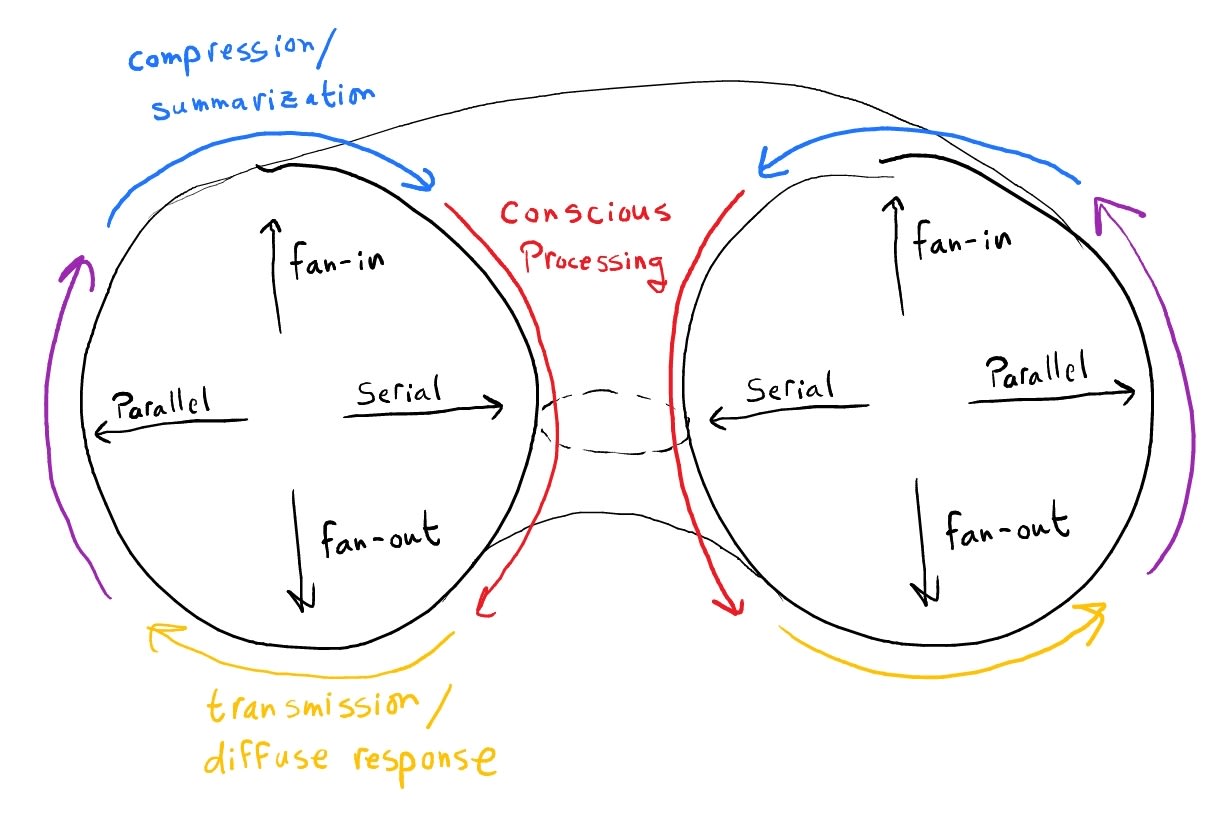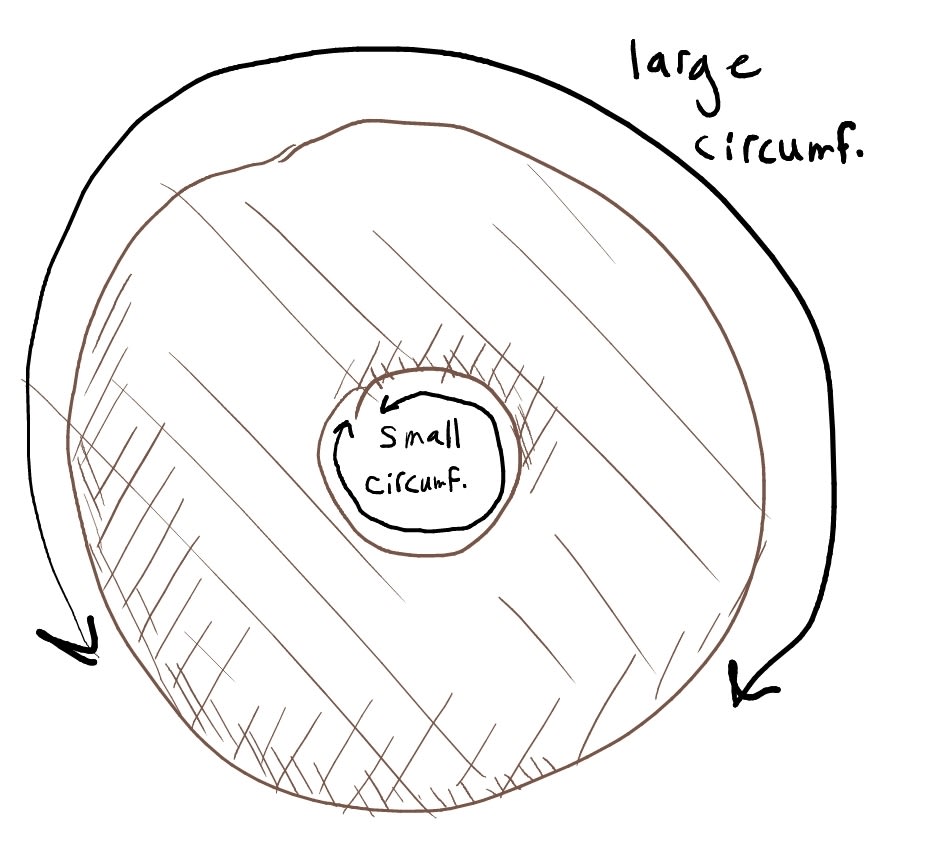epistemic status: toy model, not very novel
Iain McGilchrist has written about the differences between the left-hemisphere brain and the right-hemisphere brain in The Master and His Emissary (as well as in other works). The book opens with caveats: this is a clustering approach, not a clean division. The claim, as I understand it, is that the left hemisphere is primarily serial processing and the right brain is primarily parallel processing. These clusters are elaborated upon (via many empirical citations as well as reasoned inferences); amongst other things, serial processing is said to be detail-oriented, while parallel processing is said to be whole-oriented.
The idea of the current essay doesn't depend on the left/right thesis, nor on the thesis of distinct clusters, but only on the idea that there is a spectrum from highly serial to highly parallel (a spectrum which is liable to be correlated with other important dimensions of cognition). I am combining this with ideas from Global Workspace Theory. On the whole, the proposal is not very novel, but I think it is a fun picture with some truth to it.

The idea is as follows:
- There are a whole bunch of highly parallel computations happening in the brain.
- The information from these parallel computations gets progressively compressed/summarized ("fan-in" computations).
- These summaries serve as the main inputs to serial processing ("conscious stream-of-thought").
- Serial processing results in a relatively small amount of globally important information that is then transmitted out to many parts of the brain ("fan-out" computations).
The topology of the donut is not part of the claim here, but the metric is. I could have drawn a single circle to represent the information cycle. What I like about the donut picture is that the donut hole is smaller than the outer rim of the donut. This represents the idea of consciousness as an information bottleneck: we can only consciously attend to so much information at once.

I call the donut hole "the serial bottleneck" although this term does not appear to be quite standard. Common terms include the global workspace and the stream of consciousness.
Explicitness
The information which passes through the serial bottleneck is more "explicit" in the sense that it is more communicable, and more "symbolic" in the sense that it compresses larger states and has been optimized for usefulness in serial computations (symbol manipulation). As such, we could call the parallel processing "implicit" by contrast.
If we think of the information in the serial bottleneck as an explicit representation, we can ask: what does it represent?
- One angle on this is verbal reports; we could 'define' the meaning of an explicit representation through the linguistic behaviors it induces.
- Another angle on the meaning of explicit representations is to think about the implicit states which lead to a given explicit representation; this fits with the summary/compression idea mentioned earlier.
- A third perspective is to ask what the explicit representation leads to, looking at the fan-out computations which transmit the explicit representation out to the rest of the brain. This allows us to view the explicit representation as imperative (telling the rest of the brain to do something), or even as a query (asking the rest of the brain to compute something, which is then brought back in to the next round of serial processing).
Extended Mind
One thing I like about this picture is how easily it can apply to systems other than just the brain. For example, a person writing in a notebook is using the notebook as an extra, even-more-constrained serial bottleneck: to record something in the notebook, they have to use the bottleneck of their hand to write it down. What they've written is then presented to the rest of their mind via fan-out from their eyes. Writing something in a notebook is clearly "even more explicit" than consciously thinking it.
Similarly, a group of people talking: their individual brains form the parallel part, while their words are the serial bottleneck.
This allows us to answer questions like "what would it mean for a society to meditate?". Note that I do not mean every person in the society meditating individually. I mean: what is to a society what meditation is for a single mind?
If meditation is conceived of as a deliberate attempt to focus attention on a single subject matter (such as the breath): for a society to meditate would be for all the explicit communication channels (the media) to focus on one target. Perhaps the meditation is most successful if everyone is talking about the target subject matter as well.
If meditation is conceived of as "emptying the mind" (not paying attention to anything; halting the stream of conscious thoughts; avoiding putting content in the serial bottleneck) then it would correspond to turning off the media. Perhaps the meditation is most successful if people stop talking as well.